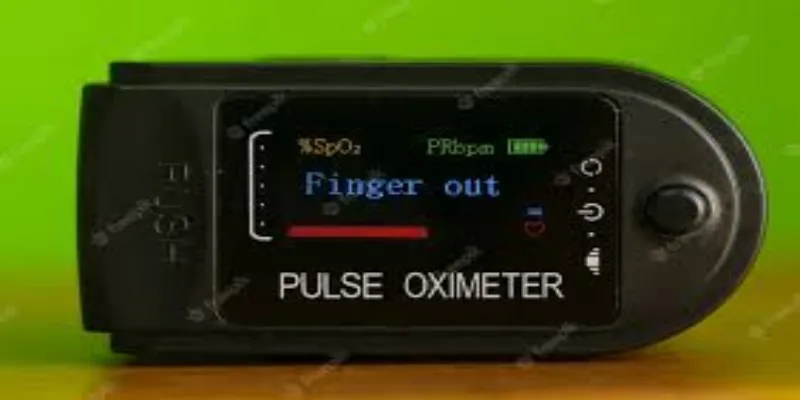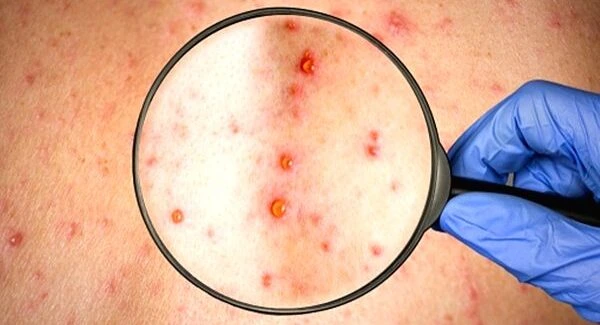How to use a Pulse Oximeter at Home?

Posted Date: October 1st, 2023
An oximeter is a medical device used to measure the level of oxygen saturation in your blood and your heart rate. It typically consists of a small clip or probe that is placed on a part of your body such as your fingertip, earlobe or toe. The oximeter uses light to detect the amount of oxygen attached to the hemoglobin in your blood and it displays the oxygen saturation level as a percentage. This information is important for assessing your overall health and the efficiency of oxygen delivery in your body. Oximeters are commonly used in medical settings and are also available for home use especially for individuals with certain medical conditions.
See also
How to use a Pulse Oximeter at Home?
Using a pulse oximeter is a straightforward process and it is a valuable tool for measuring oxygen saturation levels in your blood and your heart rate. Here is a step-by-step guide on how to use a pulse oximeter:
Step 1: Gather Your Supplies
You will need a pulse oximeter which is a small, portable device that typically clips onto your fingertip.
Ensure that the device has fresh batteries or is charged if it is rechargeable.
Step 2: Prepare Your Finger
Ensure your hands are clean and dry.
If you have nail polish or artificial nails, remove them from the finger where you plan to attach the pulse oximeter. These can interfere with the accuracy of the reading.
Step 3: Turn On the Pulse Oximeter
You will need a pulse oximeter which is a small, portable device that typically clips onto your fingertip.
Ensure that the device has fresh batteries or is charged if it is rechargeable.
Step 4: Insert Your Finger
You will need a pulse oximeter which is a small, portable device that typically clips onto your fingertip.
Ensure that the device has fresh batteries or is charged if it is rechargeable.
Step 5: Wait for the Reading
Once your finger is in place, the pulse oximeter will start measuring your oxygen saturation (SpO2) and heart rate.
It may take a few seconds for the readings to stabilize. You’ll typically see the results displayed on the device’s screen.
Step 6: Read the Results
You will need a pulse oximeter which is a small, portable device that typically clips onto your fingertip.
Ensure that the device has fresh batteries or is charged if it is rechargeable.
Step 7: Record the Results
You will need a pulse oximeter which is a small, portable device that typically clips onto your fingertip.
Ensure that the device has fresh batteries or is charged if it is rechargeable.
Step 8: Remove Your Finger
Gently slide your finger out of the pulse oximeter when you are done.
Some devices may automatically power off to conserve battery life, or you may need to manually turn it off.
Step 9: Clean and Store
After use, clean the pulse oximeter’s sensor area and screen with a clean, dry cloth or an alcohol wipe.
Store the pulse oximeter in a cool, dry place, and make sure it’s protected from damage.
It’s important to note that pulse oximeters are valuable tools for monitoring your health, but if you have concerns about your oxygen levels or heart rate, or if you’re using a pulse oximeter for a specific medical condition, it’s always best to consult with a healthcare professional for proper guidance and interpretation of the results.
What affects the pulse oximeter results?
Several factors can affect the accuracy of pulse oximeter results. It’s important to be aware of these factors to ensure you get reliable readings. Some common factors that can influence pulse oximeter results include:
Motion and Activity: Excessive movement or physical activity can lead to inaccurate readings. It’s best to remain still while using a pulse oximeter.
Poor Peripheral Circulation: Conditions that affect blood flow to the fingers, such as cold hands, low blood pressure, or vasoconstriction, can result in less accurate readings.
Nail Polish or Artificial Nails: Nail polish, artificial nails or nail decorations can interfere with the pulse oximeter’s ability to accurately measure oxygen levels. It’s recommended to remove nail polish from the finger where the device is attached.
Skin Pigmentation: Individuals with dark skin pigmentation may sometimes experience slightly less accurate readings due to the absorption of light by the skin.
Low Perfusion: In certain medical conditions or situations where blood circulation is compromised such as shock or hypothermia the device may struggle to obtain accurate readings.
Carbon Monoxide Poisoning: Carbon monoxide (CO) in the blood can interfere with pulse oximeter readings because CO binds to hemoglobin similarly to oxygen, potentially leading to falsely high oxygen saturation levels.
Movement of the Sensor: If the sensor is not securely attached or moves during measurement it can affect the accuracy of the results.
Poorly Maintained or Low-Quality Sensors: Using a pulse oximeter with a poorly maintained or low-quality sensor can lead to less reliable readings. Regular maintenance and calibration of the device are important.
Ambient Light: Strong ambient light or direct sunlight can interfere with the functioning of some pulse oximeters. It’s best to use the device in a well-lit but shaded area.
Medical Conditions: Certain medical conditions such as anemia can affect the ability of blood to carry oxygen, potentially leading to lower readings.
Altitude: At high altitudes where there is lower oxygen pressure pulse oximeter readings may naturally be slightly lower than at sea level.
Device Placement: Proper placement of the sensor on the fingertip or other measurement site is essential for accurate results. Ensure that the sensor is correctly positioned according to the manufacturer’s instructions.
Keep in mind that while pulse oximeters are valuable tools for monitoring oxygen levels and heart rate they may not always provide perfect accuracy, especially in challenging conditions. If you have concerns about your health or the accuracy of the readings it’s important to consult with a healthcare professional for a more comprehensive assessment.
When should you call for help?
If you are using an oximeter to monitor your oxygen saturation (SpO2) levels and notice readings that fall outside the normal range or experience any concerning symptoms, it’s important to take action promptly. Here are some guidelines on when you should call for medical help:
Severely Low Oxygen Levels: If your SpO2 reading consistently drops below 90% and you are experiencing symptoms like shortness of breath, confusion, chest pain, or bluish lips or nails (cyanosis), seek immediate medical attention. This could be a sign of severe respiratory distress or oxygen deprivation.
Symptoms of Respiratory Distress: If you are struggling to breathe, have rapid or shallow breathing, or if you notice a significant change in your breathing pattern, contact a healthcare professional or go to the nearest emergency room.
Persistent Symptoms: If you have symptoms such as severe coughing, high fever, chest tightness, or extreme fatigue, and your SpO2 levels remain consistently low or worsen over time, seek medical advice.
Underlying Health Conditions: If you have pre-existing health conditions that put you at higher risk for respiratory issues, such as chronic obstructive pulmonary disease (COPD), asthma, or heart disease, and your oxygen levels drop or symptoms worsen, contact your healthcare provider for guidance.
Sudden Deterioration: If you experience a sudden and significant drop in SpO2 levels, especially if it’s accompanied by a change in consciousness, confusion, or severe weakness, call 911 or seek immediate medical attention.
Other Concerning Symptoms: Trust your instincts. If you or someone you’re caring for appears to be in distress, experiencing severe symptoms, or you have any doubts about the situation, do not hesitate to call for medical help.
It’s essential to remember that while oximeters are valuable tools for monitoring oxygen levels, they are not a substitute for professional medical evaluation and care. If you are ever in doubt or if you notice any severe or unusual symptoms, it’s always better to err on the side of caution and seek medical assistance promptly. A healthcare provider can assess your condition comprehensively, provide appropriate treatment, and determine if further medical intervention is necessary.
What are normal 2 readings on a pulse oximeter?
Other Concerning Symptoms: Trust your instincts. If you or someone you’re caring for appears to be in distress, experiencing severe symptoms, or you have any doubts about the situation, do not hesitate to call for medical help.
Oxygen Saturation (SpO2): The normal SpO2 level for a healthy individual at sea level is usually between 95% and 100%. SpO2 measures the percentage of hemoglobin in your blood that is saturated with oxygen. A reading below 95% may indicate a potential issue with oxygen delivery to your body and should be discussed with a healthcare professional if it persists.
Heart Rate (BPM): The normal resting heart rate for adults is typically between 60 and 100 beats per minute (BPM). However, individual heart rates can vary based on factors such as age, fitness level, and overall health. It’s important to consider your baseline heart rate when interpreting this measurement.
Keep in mind that these normal ranges are general guidelines and may vary slightly from person to person. Additionally, some individuals, such as athletes, may have lower resting heart rates.
If your pulse oximeter readings consistently fall outside of these normal ranges, especially if you’re experiencing symptoms like shortness of breath, dizziness, chest pain, or confusion, it’s essential to consult with a healthcare professional for a more comprehensive evaluation and guidance on your specific health condition. Pulse oximeters are valuable tools for monitoring, but they should be used in conjunction with clinical assessment for a complete picture of your health.




